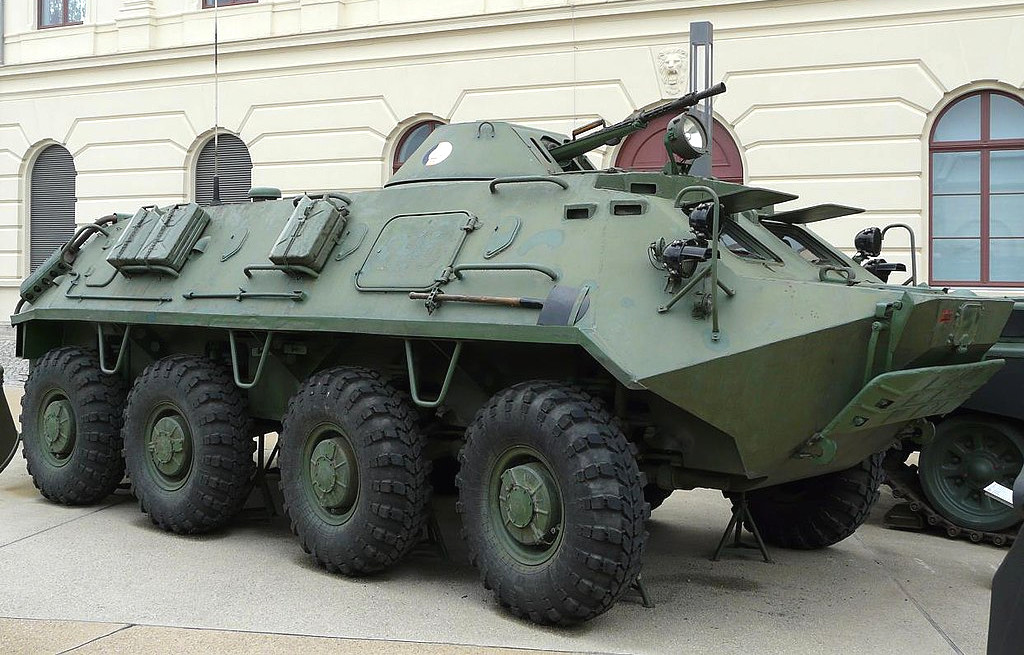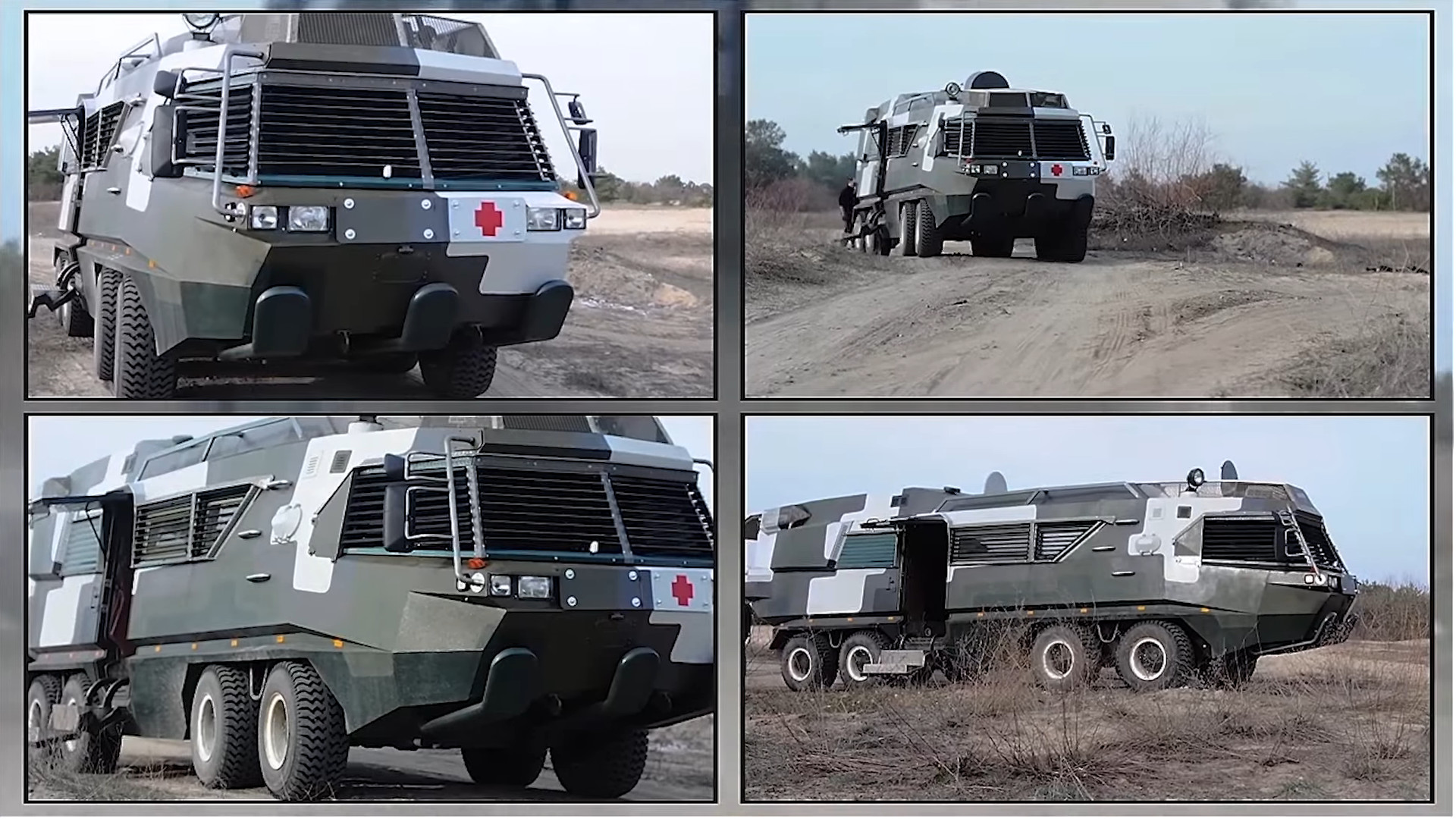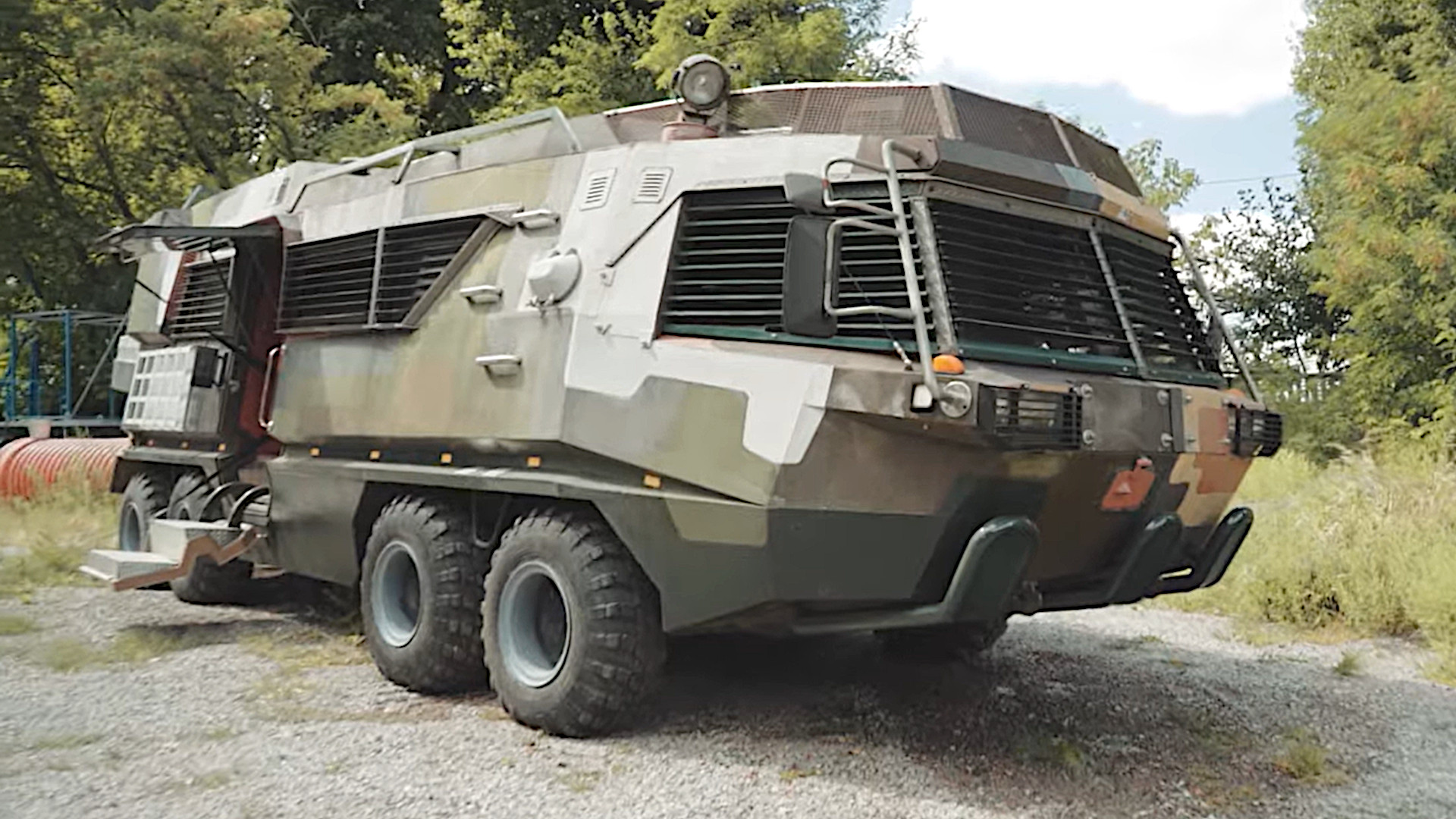Volunteer combat medics in Ukraine may put an absolute beast of a machine, nicknamed the “Ark,” into use as a mobile aid station to help in the country’s ongoing offensives against Russian forces. The vehicle, which reportedly uses chassis components from old Soviet-era BTR-series wheeled armored personnel carriers, looks like it would be most at home on the set of a Mad Max movie or some other post-apocalyptic science fiction movie or television series.
Back in September, Informer Dnipro, which describes itself as an independent news portal focused on Ukraine’s Dnipro region, published a Ukrainian-language interview with the Ark’s creator, design engineer Vyacheslav Lyashenko, and other individuals now tied in various ways to the project. Dnipro, which is situated in eastern Ukraine has been at the center of major fighting for weeks now as the country’s armed forces continue their push to eject invading Russian forces.
Lyashenko, who Informer Dnipro says is better known locally for high-performance custom cars, including a Dodge Stealth with a 2,000 horsepower engine, reportedly first built the Ark in 2012. At that time, idea was to create a custom luxury tour bus for charter rentals.

At the core of the design are chassis components from at least one Cold War-era BTR-60 armored personnel carrier, according to Lyashenko. The Ark certainly has eight wheels, but they are commercial types rather than the military ones found on BTR-60s. In addition, if a standard BTR-60 chassis is under there in any part, its definitely been elongated at least to some degree, with a noticeable gap between four wheels in the front and the four in the back that is not present on the original Soviet APC. This is similar to what one might see in a limousine conversion of a more traditional car or truck.

The Ark’s huge angular body with its slat-covered windows is of course entirely new. As originally designed, it had various amenities, including a kitchenette with a stove and a refrigerator, a bathroom with a shower, and air conditioning throughout. From a video – seen earlier in this story – and pictures Informer Dnipro included in their story, the interior overall looks to be relatively plush, lined with leather-looking material and featuring wood or faux wood cabinets and other trimmings.
Overall, Ark weighs around 13 tons, some two tons more than a standard BTR-60, according to Informer Dnipro. Powered by two turbocharged diesel engines, it can get up to speeds of around 50 miles per hour (80 kilometers/hour) on improved roads, but is apparently more “comfortable” to drive at between 40 and 45 miles per hour (65-70 kilometers/hour). The story did not provide any details about the vehicle’s off-road capabilities, but it does have three protruding prong-like bumpers/skid plates at the front that look as if they might help with crossing obstacles or going up steeper inclines without damaging its front end.
After Russia seized Ukraine’s Crimea region in 2014 and began actively supporting ostensibly local separatists in eastern Ukraine fighting against the government Kyiv, Lyashenko pitched the design as a mobile medical vehicle to the country’s armed forces, but appears to have received no interest. Lyashenko told Informer Dnipro that the Ark gained three-millimeter-thick titanium plating over much of its exterior, as well as rubber insulation in certain places, giving at least some protection from shrapnel and small arms rounds, as part of work to make it more suitable for military use.
Online, the Ark has already drawn comparisons to a number of fictional vehicles, particularly the EM-50 Urban Assault Vehicle from the 1981 comedy Stripes starring Bill Murray and the Landmaster from the 1977 post-apocalyptic film Damnation Alley. There is also the Ark II from the 1970s post-apocalyptic television series of the same name, though this vehicle’s nickname appears to be unrelated – more on that later.



It’s interesting to remember that the Saudi Arabian armed forces have very real tractor-trailer field hospitals with very angular cab and body designs, too. When The War Zone first became aware of those trucks back in 2018, we noted that seemed broadly reminiscent of the tractor-trailer mobile command center and laboratory from the 1992 action movie Universal Soldier, the cab of which also had metal slats across its windows.

When it comes to Lyashenko’s Ark, the full extent of the work that’s actually been done to the vehicle since 2014 and what its current condition is are not entirely clear. Informer Dnipro’s video shows that it is at least drivable across short distances. From the pictures from Informer Dnipro and other imagery circulating online, it appears to have worn at least two different camouflage schemes over the years, including one with red crosses as part of its potential medical role.

As for using the Ark as an ambulance, it’s unclear if it is currently configured for this role. There was a crowd-sourcing campaign to raise 10 million Ukrainian hryvnias to get the vehicle truly ready for medical use. At the rate of conversion at the time of writing, 10 million hryvnias is equivalent to just under $272,100. Many of the Ark’s original features, such as its onboard five-kilowatt power generator and ability to hold up to 500 liters of potable water, could definitely help with a true conversion into an actual medical vehicle.
If the Ark does ultimately get a full medical makeover, Gennady Druzenko’s Pirogov First Volunteer Mobile Hospital (PFVMH), a volunteer medical unit that has been active since 2014, would be the likely recipient of the vehicle. Druzenko is apparently the one who gave it the nickname Ark in the first place and PFVMH is part of the current crowd-sourcing effort.
“Medics on the front line desperately need armored evacuation vehicles. We have been looking for them since the beginning of the full-scale war. We are happy to have 15-or-more-year-old used [Land Rover] Defenders and Pinzgauers… And here it turns out that Ukrainian mechanics have long made a fantastic vehicle that is so needed today in the hottest spots and called it ‘Ark,'” according to a post on PFVMH’s official website, which includes a link to make donations. “The Foundation ‘And on the Land Renewed’ and PFVMH decided that it’s time for Ark to fall in and bring our victory nearer.”

“You need to understand that doctors say that up to 20 percent of guys die because they don’t have time to stabilize the fighters on the battlefield,” Yevgeny Myronenko, a representative of the “And on the Land Renewed” charitable foundation that is also involved in this effort, had told Informer Dnipro. Myronenko explained to the outlet that Druzenko’s plan was to use the Ark to establish an intermediate aid station where necessary, some six to 10 miles (10-15 kilometers) from the front lines, where wounded could be stabilized before being moved to more robust medical facilities.
The vehicle could, of course, be used to actually move casualties across longer distances, and could potentially be configured to carry a significant number of them at once. If it is at all armored, even just against shrapnel, this could be very valuable, too, given how artillery is a top threat on both sides of the battlefield in Ukraine.
Druzenko, who is a lawyer by training, had drawn wide criticism in March for comments he made in an interview with a Ukrainian television station around a month after Russia launched its all-out invasion. He said he had told his medics to castrate any wounded Russian soldiers they were asked to treat, which would be a war crime. He quickly apologized for those remarks in a post on Facebook, saying he had been overtaken by emotion, that no one was being castrated, and that “we are saving lives. Period.”
The Ark is, of course, a one-off custom-made vehicle with unique maintenance and logistics requirements, and it’s far from clear how well-suited it might be for supporting actual combat operations even miles away from the front. At the same time, Ukraine’s armed forces, as well as volunteer units, have already been using a diverse mixture of improvised, obscure, obsolete, and unique types of vehicles out of necessity.
On top of that, though military aid gets the most attention, Ukraine has an equal need for more ambulances and other emergency vehicles and support equipment, especially in light of regular Russian strikes on civilian areas. Many countries have already been donating more conventional ambulances, among other things, to help Ukrainian first responders.
All told, it very much remains to be seen if the Ark will actually take part in the current conflict in Ukraine, but there is at least some level of real interest from actual volunteers providing critical medical capabilities near the front in Dnipro.
Contact the author: joe@thedrive.com
